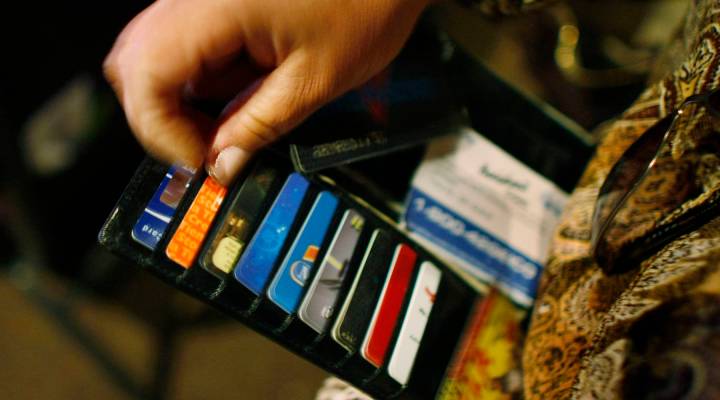
As consumer borrowing picks up, banks keep a wary eye on the possibility of more loan defaults
As consumer borrowing picks up, banks keep a wary eye on the possibility of more loan defaults

Later this morning, the New York Fed will release its latest quarterly report on household debt and credit. We learned last week that consumer credit rose by an annual rate of 14% in March. At the same time, all that debt is getting more expensive, as the Federal Reserve continues to hike interest rates. And lately, lenders have been paying close attention to whether consumers – and other borrowers – can pay off that debt.
The concern here is whether consumers will have the cash they need to pay back their loans if interest rates and prices both continue to rise.
“Rents are going up, costs are going up, and there’s gonna be some … I think there’s going to be some delinquency down the road,” said Peter Alden, CEO of Bay State Savings Bank in Massachusetts.
To be clear, this isn’t a problem right now. The job market is strong. Many people still have plenty of savings.
Alden said delinquencies are at historic lows, but, “the concern is as costs go up, what is 6 or 12 months down the road gonna look like?”
Even though the economy is in pretty good shape right now, banks are making preparations in case things go south.
Dominik Mjartan is CEO of Optus Bank in South Carolina. He said it’s setting aside a bigger buffer in case existing loans go bad.
“At Optus Bank we have definitely contributed more to our loan loss reserve, and are looking at actually budgeting for contributing even more so, in the coming quarters,” he said, adding that the bank is also getting a lot stricter when it comes to making new loans. That means giving borrowers less leeway.
“We’re definitely not cutting any corners now. We may not have tightened our standards, but we’re being a lot more frugal with our exceptions,” said Mjartan.
Lenders aren’t just keeping an eye on consumer credit. They’re also watching for whether businesses have the cash flow they need.
David Reiling, CEO of Sunrise Banks in Minnesota, said businesses are feeling a lot of pressure this year from rising wages and supply chain problems.
“A business only makes money when it’s selling something, and it can collect the cash for it. And so, if you can’t sell anything, if you don’t have that product, boy, it’s really difficult to survive,” he said.
One sector Reiling is keeping an eye on is commercial real estate. For instance, if remote work pushes businesses to end their leases this year building owners might have trouble paying their loans.
And if that happens?
“The bank is likely to reach out to them within 30-60 days, have a conversation about what’s going on in that building, what are their attempts to lease it up, where are their rents at, do they have more leases that are expiring,” Reiling said.
Reiling also adds that banks are likely to have a lot of those conversations with their clients if the economy starts to dip.
There’s a lot happening in the world. Through it all, Marketplace is here for you.
You rely on Marketplace to break down the world’s events and tell you how it affects you in a fact-based, approachable way. We rely on your financial support to keep making that possible.
Your donation today powers the independent journalism that you rely on. For just $5/month, you can help sustain Marketplace so we can keep reporting on the things that matter to you.

















